In 2025, home insurance is crucial for protecting your property – as by accident you might be in need of performing huge repair or replacement, wisely chosen policy may save you from borrowing thousands of dollars to hire a contractor. As the roof is one of the most important and vulnerable parts of your home, you should make sure your policy includes strong roof coverage. But actually… does every homeowners insurance will help? Is roof replacement always covered? In theory, yes, but it all depends on many factors which will be described at this post.
Table of Contents
When Does Your Homeowners Insurance Apply?
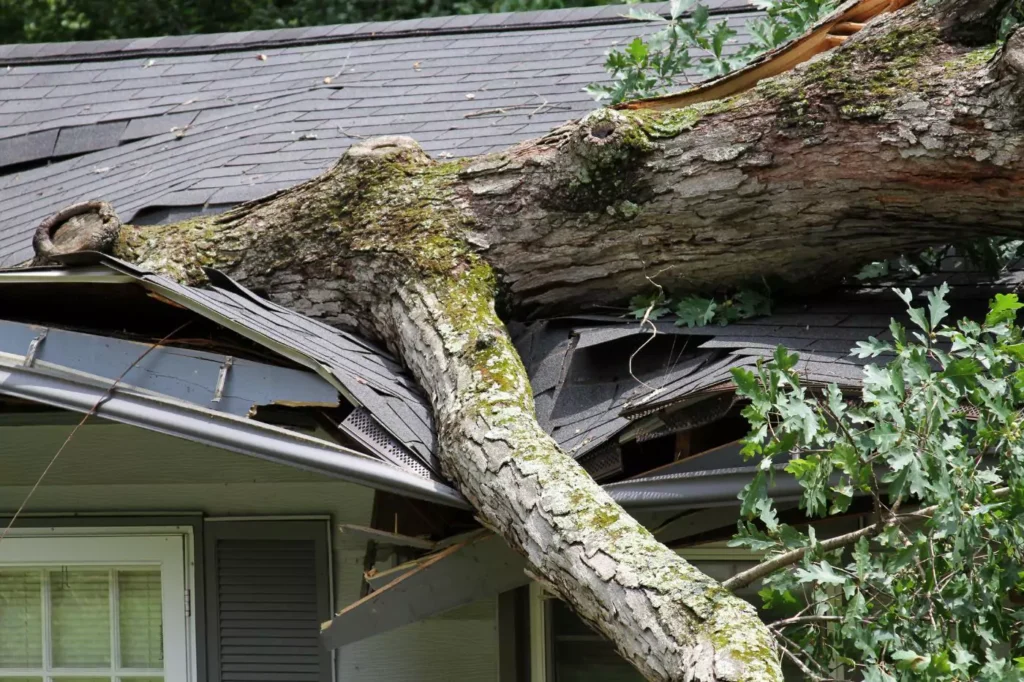
Home insurance (so-called HOI) typically covers unexpected events caused by external factors—often referred to as “acts of God”—that result in damage to your roof. These damages are usually caused by weather-related factors beyond your control. Some of the most common causes include:
- Strong winds and storms: Damaging shingles, shakes or any other roofing materials.
- Hail: Damage from hail, such as dents, cracks, or holes in the roof.
- Snow and ice: If excess snow causes part of the roof to collapse, your insurance should cover repairs.
- Fire and explosions: Damage caused by a fire or explosion (such as from a gas leak) may be covered by your policy.
- Lightning strikes: Both direct damage and fires caused by lightning are typically included.
However, it’s important to note that your roof must be in good condition at the time of the damage for the insurance to cover the repairs. Insurance companies usually require homeowners to regularly maintain their roofs, remove accumulated snow, and fix minor leaks. If the damage is due to neglect, the insurance provider may deny the claim.
When Does Your Home Insurance Not Apply?
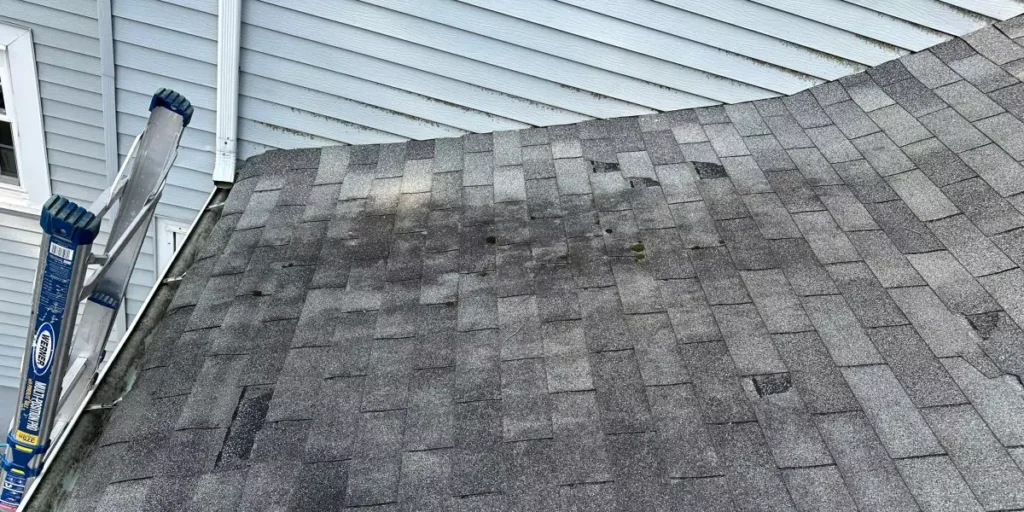
While home insurance may cover many types of roof damage, it’s important to know that not all damage will be covered by your insurer. The payout depends not only on whether damage occurs, but also on its cause and the condition of your roof. Typically, homeowners insurance policies won’t cover damage caused by:
- Lack of maintenance: If your roof wasn’t properly maintained, the insurer may argue that the damage was due to the homeowner’s neglect.
- Construction or installation defects: If the roof was improperly installed or made with subpar materials, insurance usually won’t cover the damage.
- Natural wear and tear: The natural aging of roofing materials is considered a result of long-term use, not an insurable event.
- Neglecting to remove hazards: For example, failing to clear snow off the roof in winter could be seen as the homeowner’s responsibility.
- Exclusions in the policy: Some policies specifically exclude certain events, like earthquakes or floods.
Additionally, if your roof is older—especially if it’s more than 15–20 years old—the insurer may limit coverage. For example, they might only pay out based on actual cash value (ACV) rather than the full cost of replacement (RCV).
ACV vs. RCV: What They Mean and Why It Matters?

A key factor that influences the amount of compensation you’ll receive for roof damage is how the roof’s value is calculated in your insurance policy. In the U.S., there are two main types of valuation methods: Actual Cash Value (ACV) and Replacement Cost Value (RCV). The difference between them can have a significant impact on how much you actually get paid out.
ACV stands for Actual Cash Value, which is the replacement value minus depreciation. In simple terms, it’s the current “used” value of your roof. For example, if your roof is several years old and near the end of its lifespan, the compensation you receive could be much lower than the cost of full repair or replacement – in this scenario, the the homeowner is responsible for covering the difference between replacement cost and the roof’s depreciated value (it’s so-called deductible).
RCV stands for Replacement Cost Value. This covers the full cost of repairing or replacing the damaged roof with a new one, without factoring in depreciation. While it’s the more expensive option, it’s also more beneficial for homeowners because it provides the necessary funds to restore the property to its original condition. However, it’s important to note that the payout for RCV happens in two stages: first, the insurer pays the ACV, and the remaining amount is paid after you provide proof of repairs, such as invoices.
Understanding these differences is crucial because some policies default to ACV, especially for older homes. ACV policies tend to have lower premiums but usually pay out less, while RCV policies are more expensive but pay more in case of damage. If you want full protection, it’s worth ensuring that your policy includes RCV or purchasing an add-on. Otherwise, even if your claim is accepted, you may not receive enough to cover the cost of repairs. Keep in mind that if you decide to replace your roof, you may be in need of paying tens of thousand of dollars, while homeowners insurance may cover only a half of this sum.
How to Properly File a Roof Damage Claim?
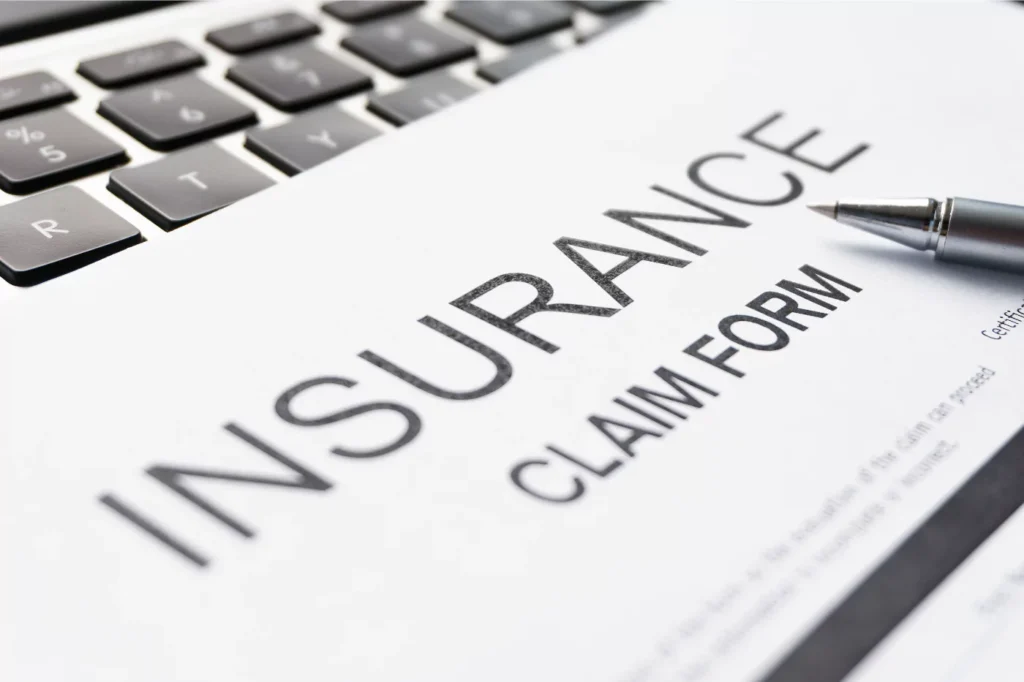
After securing your home – if your roof has been damaged – one of the most important steps is to quickly and accurately report the damage to your insurer. First, protect the area, for example, by covering the damaged section with a tarp to prevent further damage, which could impact how your claim is processed. Next, document the damage thoroughly by:
- Taking pictures of the exterior roof damage.
- Photographing any interior damage, such as water-damaged ceilings, walls, or floors.
- Recording the date, time, and circumstances of the incident.
- Including weather documentation, such as storm reports or forecasts.
- If possible, obtaining a contractor’s opinion.
You can typically file your claim by phone, online, or through a mobile app. Be sure to have your policy number, a description of the damage, and the photos ready. Once the claim is submitted, the insurer will send a licensed insurance adjuster to assess the damage and prepare a report, which will be used to decide if and how much compensation you’ll receive. It’s important for the homeowner to be present during this visit and to ask any questions regarding coverage and the valuation process.
The final decision is made based on the adjuster’s report and the terms of your policy, with the payout reflecting either the Actual Cash Value (ACV) or the Replacement Cost Value (RCV). Keep in mind that any delays in reporting the damage or incomplete documentation can negatively affect the insurer’s decision.
Common Mistakes That Can Lead to a Denied Insurance Claim
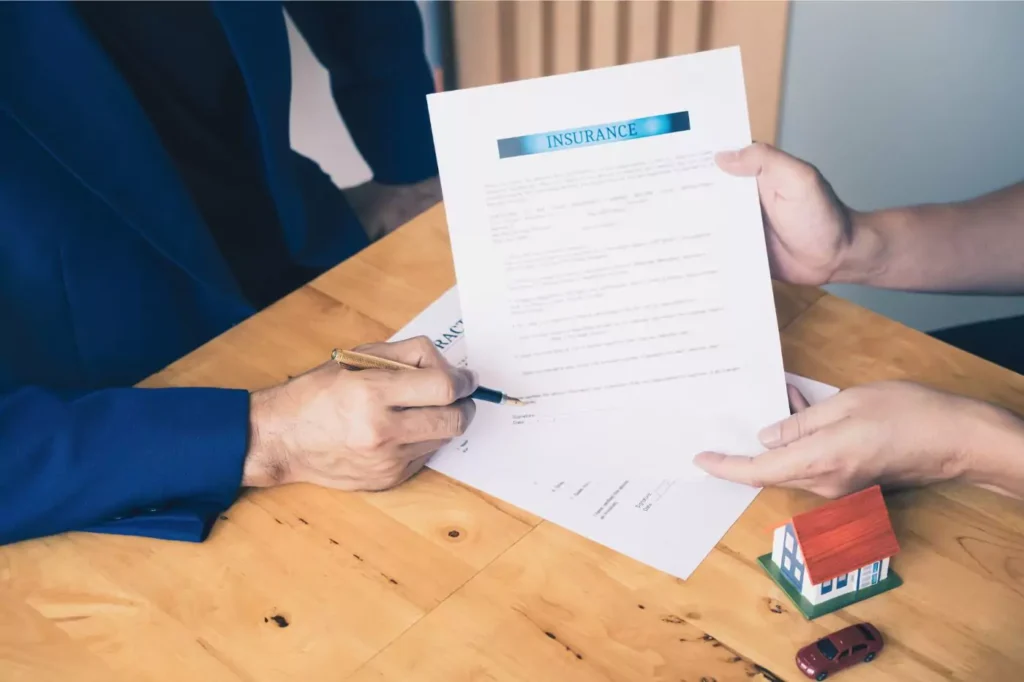
It’s important to know that seemingly small mistakes made by homeowners can result in a denial of compensation or a significant reduction in the payout. Here are the most common mistakes homeowners make:
- Reporting the claim too late: Insurance companies often require claims to be reported within a certain period (e.g., one or two weeks) after the damage occurs. A delay may be seen as a violation of the policy terms.
- Lack of proper documentation: Insufficient details about the incident – such as a vague description, missing photos, or overlooked details (like the date) – can make it difficult for the insurer to verify the claim.
- Making repairs before the adjuster’s visit: Attempting to fix the roof before the adjuster arrives can lead the insurer to question the extent of the damage or even deny the claim entirely.
- Technical neglect: If the roof is in poor condition due to lack of maintenance, the insurance company may decide that the damage was the homeowner’s fault.
- Not following the terms of the insurance policy (SOP): For example, failing to report changes to the property, not disclosing previous repairs, or providing outdated information could affect the insurer’s decision to approve or deny the claim.
What to Do If Your Insurer Denies Your Roof Replacement Claim?
There are times when an insurer may deny your claim. The first thing you should do is carefully review the reasons for the denial and compare them with the terms of your home insurance policy.
If you believe the denial is unjust, you can file an internal appeal directly with the insurer. In your appeal letter, make sure to include your personal details, policy number, and claim number, along with a clear explanation of why you disagree with the decision. It’s also helpful to attach supporting documentation such as photos of the damage, repair estimates, expert opinions (e.g., from an adjuster), invoices, and any other evidence that supports your case.
If the insurer stands by their decision after the internal appeal, your next step is to request an external review. This is an independent process conducted by your state’s Department of Insurance (such as Illinois Department of Insurance). Your request for external review should include all relevant documentation: the insurer’s decision, your appeal letter, photos, expert reports, and the relevant parts of your policy. Depending on the state, you may also need to fill out a special form, which is usually available on the local regulator’s website.
Home insurance may cover roof damage, but whether you’re eligible for compensation depends on the cause of the damage, the condition of your roof, and the terms of your policy. To improve your chances of getting paid, it’s important to report the damage immediately, document everything thoroughly, and avoid common mistakes like late reporting or making repairs before the adjuster’s visit. You should also schedule an inspection as soon as possible.
If your claim is denied, the first step is to file an internal appeal directly with your insurer, providing all relevant evidence. If that doesn’t resolve the issue, you can request an external review from your state’s Department of Insurance. Don’t try doing it any other way – it will not help.
Does Roof Insurance Cover Installation of Any Material?
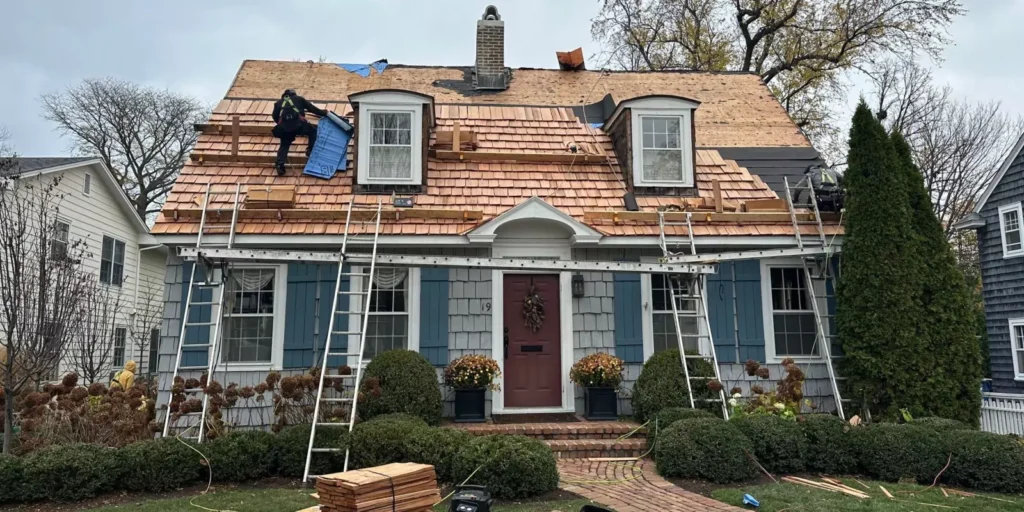
Theoretically, your home insurance company is obliged to replace your roof with a material similar to the one damaged (like kind and quality material). This rule applies to metal, asphalt, slate and flat roofs, but things get complicated when your roof is made of wood, especially cedar.
As cedar shakes are susceptible to damage related to hail, fire and strong wind, insurance companies are reluctant to pay for new wooden roofs. Statistically speaking, the cost of a new roof made of cedar doesn’t justify the high risk of leaking and damage. Thus, your insurance company may rise your premiums, reduce the insurance coverage or hesitate to replace the roof for a cedar one. As insurance rates for wood roofs are noticeably higher, thousands of American homeowners opt for composite alternatives, such as DaVinci or Brava shakes. It’s clearly visible in areas with a high risk of fire, such as Chicago North Shore.
If you want to replace damaged asphalt roof with a different material, such as composite shakes, you need to be ready to cover the cost gap. In such a case, your insurer will pay solely the approximate cost of restoring the roof to the previous condition. If you want to conduct a home improvement, you need to cover it by yourself.
If you’re unsure whether your roof is properly covered, review your policy with your insurer or consult a local roofing contractor who has experience working with insurance claims. The right preparation today can save you thousands tomorrow.”

